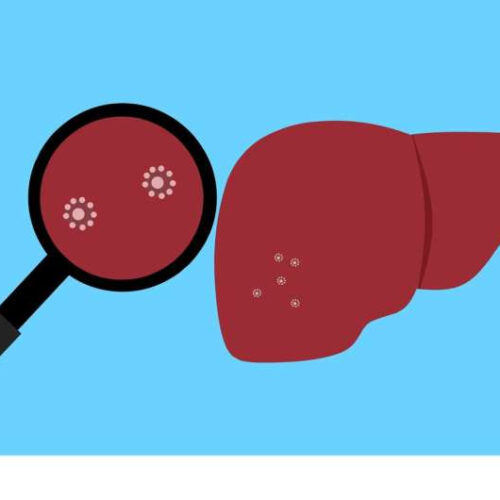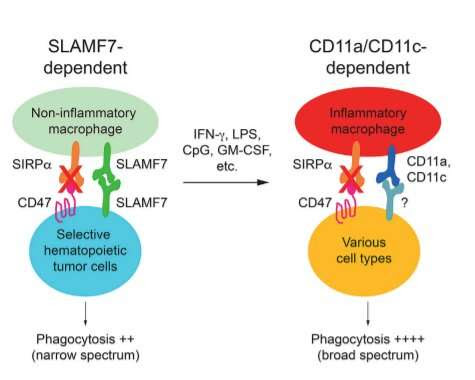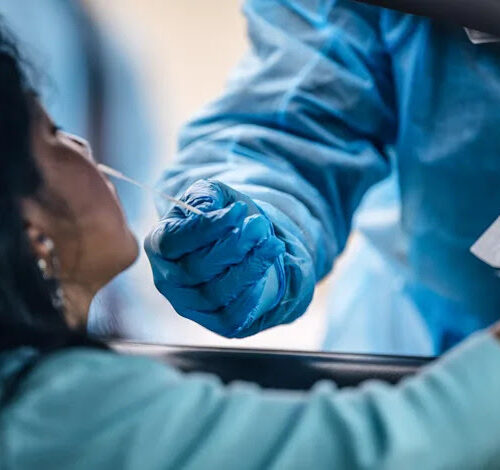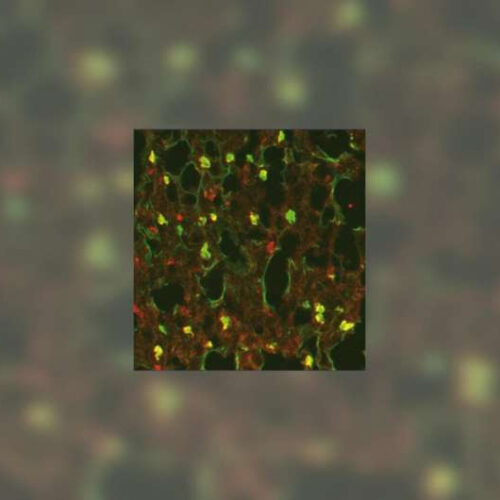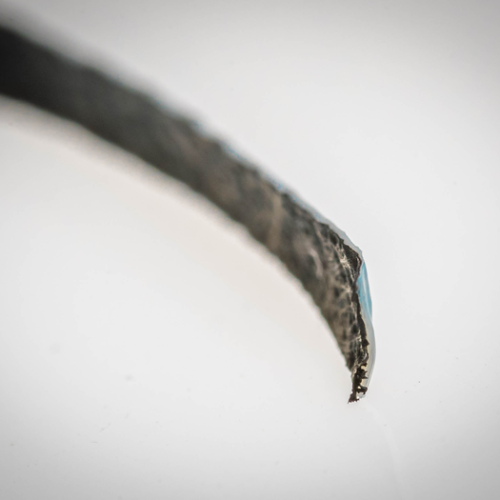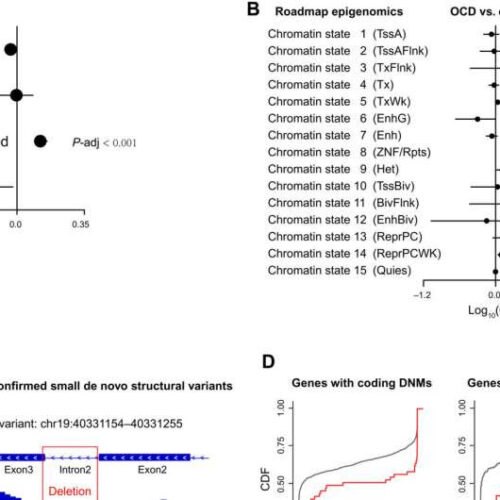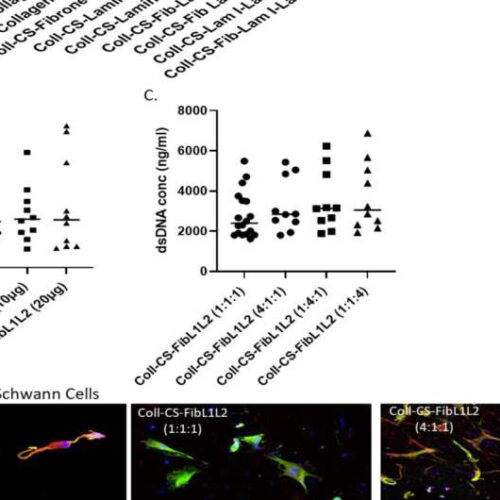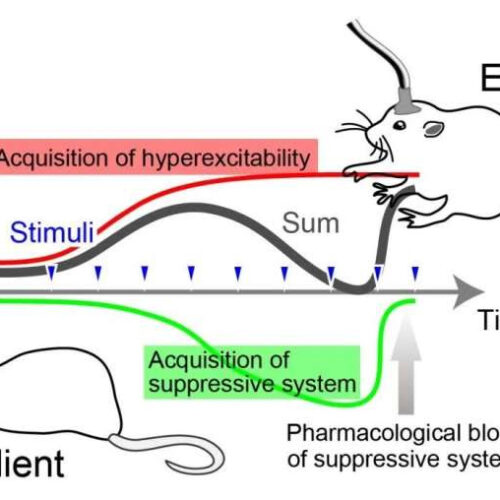by National University of Singapore Credit: Pixabay/CC0 Public Domain Hepatocellular carcinoma (HCC) is the most common type of primary liver cancer. It is one of leading causes of cancer-related deaths globally, with more than 700,000 new cases and 600,000 estimated HCC deaths each year. HCC occurs most often in people with chronic liver diseases such...
Increasing the capacity of the immune system to kill cancer cells
by University of Montreal Graphical abstract. Credit: DOI: 10.1016/j.celrep.2021.110111 Awakening the immune system’s instinct for destroying cancer, using two molecules located on the surface of macrophages: that’s the promising avenue opening up from recent laboratory work of Dr. André Veillette. Director of the Molecular Oncology Research Unit of the Montreal Clinical Research Institute (IRCM) and...
Genetic risk factor found for Covid-19 smell and taste loss, researchers say
Sarah Sloat Mon, January 17, 2022, 9:03 AM·5 min read Scientists are piecing together why some people lose their sense of smell after contracting Covid-19. A study published Monday in the journal Nature Genetics identified a genetic risk factor associated with the loss of smell after a Covid infection, a discovery that brings experts closer to...
Nanotherapy offers new hope for the treatment of Type 1 diabetes
January 17, 2022 | By Lila Reynolds Individuals living with Type 1 diabetes must carefully follow prescribed insulin regimens every day, receiving injections of the hormone via syringe, insulin pump or some other device. And without viable long-term treatments, this course of treatment is a lifelong sentence. Pancreatic islets control insulin production when blood sugar levels...
Ion channel regulates molecule that contributes to COPD
JANUARY 14, 2022 by Ludwig Maximilian University of Munich Immunofluorescence image of lung tissue showing co-localization of TRPML3 (green) and macrophages (red). Credit: Barbara Spix Chronic obstructive pulmonary disease—COPD for short—is one of the most common diseases of the lung. It affects almost 300 million people worldwide, of which about three million die every year. A...
Bone growth inspired “microrobots” that can create their own bone
LINKÖPING UNIVERSITY IMAGE: THE BLACK MATERIAL IS AN ELECTROACTIVE POLYMER, THE VOLUME OF WHICH CHANGES WHEN THE RESEARCHERS APPLY A LOW VOLTAGE, WHICH MAKES THIS SIMPLE “MICROROBOT” BEND. ON THE OTHER SIDE OF THE MATERIAL, YOU CAN SEE THE GEL TO WHICH THE RESEARCHERS HAVE ATTACHED BIOMOLECULES THAT ALLOW THE SOFT GEL MATERIAL TO HARDEN...
A Protein Controlled by both Light and Temperature May Open Doors to Understanding Disease-related Cell Signal Pathways
Posted Today Most organisms have proteins that react to light. Even creatures that don’t have eyes or other visual organs use these proteins to regulate many cellular processes, such as transcription, translation, cell growth, and cell survival. The field of optogenetics relies on such proteins to better understand and manipulate these processes. Using lasers and genetically engineered versions...
Association found between de novo genetic mutations and obsessive-compulsive disorder
JANUARY 17, 2022 REPORT by Bob Yirka , Medical Xpress Fig. 1. Rate of DNMS across genomic regions. (A and B) Distribution of the per-individual rate of mutations within (A) different functional genomic regions and (B) different chromatin states. The P values represent the significance of differences in controls or patients with other diseases and were...
Researchers unlock breakthrough approach to repair peripheral nerve damage
JANUARY 17, 2022 by RCSI University of Medicine and Health Sciences Figure 1. 2D validation of ECM substrate combinations and ratios. A) Significant changes in proliferation via dsDNA content in S42 Schwann cells at day 7 using a variety of ECM coatings compared to plates coated with 50 µg/ml of collagen I only B) No...
Harnessing the brain’s plasticity to acquire epilepsy resilience
JANUARY 17, 2022 by Tohoku University Epilepsy resilience can be created by enhancement of suppressive system. Credit: Ko Matsui Around 1 percent of the world’s population lives with epilepsy; yet only 65 percent of epilepsy patients can manage their symptoms with medication. Currently, surgically removing the lesion in the brain responsible for the condition is the...

